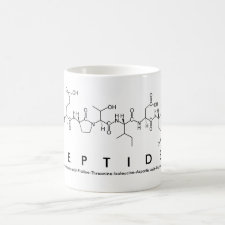
Authors: Chen K, Liu MC, Zhao GH, Shi HJ, Fan LF, Zhao SC
Article Title: Fabrication of a Novel and Simple Microcystin-LR Photoelectrochemical Sensor with High Sensitivity and Selectivity.
Publication date: 2012
Journal: Environmental Science & Technology
Volume: 46
Issue: (21)
Page numbers: 11955-11961.
DOI: 10.1021/es302327w
Abstract: Microcystin-LR (MC-LR), an inert electrochemical species, is difficult to be detected by a simple and direct electrochemical method. In the present work, a novel photoelectrochemical sensor is developed on highly ordered and vertically aligned TiO2 nanotubes (TiO2 NTs) with convenient surface modification of molecularly imprinted polymer (MIP) (denoted as MIP@TiO2 NTs) for highly sensitive and selective determination of MC-LR in solutions. Molecularly imprinted polypyrrole (PPy) of MC-LR is chosen as the recognition element. The designed MIP@TiO2 NTs photoelectrochemical sensor presents excellent applicability in MC-LR determination, with linear range from 0.5 to 100 μg L-1 and limit of detection of 0.1 μg L-1. Moreover, the sensor exhibits outstanding selectivity while used in coexisting systems containing 2,4-dichorophenoxyacetic acid, atrazine, paraquat, or monosultap with high concentration, 100 times that of MC-LR. The sensor presents good photoelectric conversion efficiency and detection sensitivity, as well as broad linear detection range, mainly because of the high specific surface area and photoelectric activity of TiO2 NTs and the π bond delocalized electron system of PPy that promotes the separation of electron-holes. The prominent selectivity is from the MIP by forming multiple hydrogen bonds between PPy and MC-LR. Mechanisms for photoelectrochemical analysis and selective recognition are also discussed
Template and target information: Microcystin-LR, MC-LR



Join the Society for Molecular Imprinting

New items RSS feed
Sign-up for e-mail updates:
Choose between receiving an occasional newsletter or more frequent e-mail alerts.
Click here to go to the sign-up page.
Is your name elemental or peptidic? Enter your name and find out by clicking either of the buttons below!
Other products you may like:
 MIPdatabase
MIPdatabase









